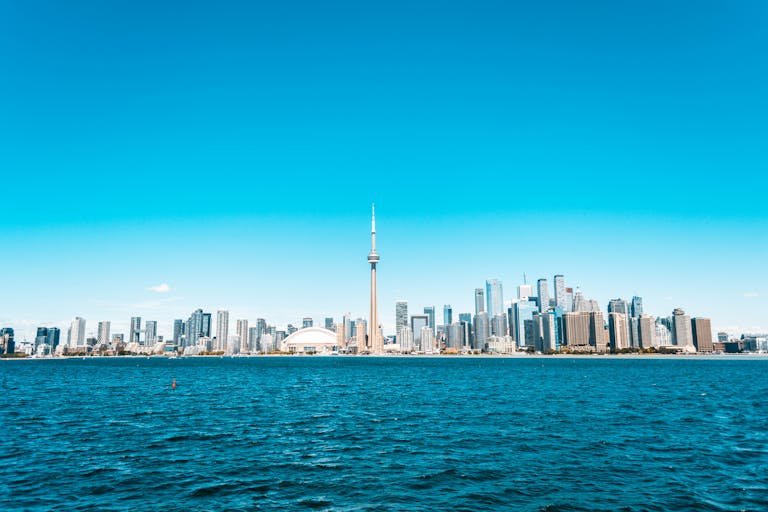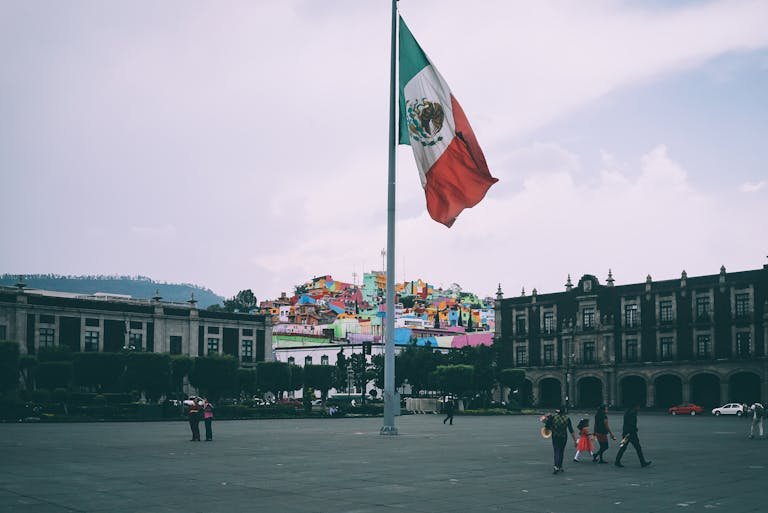What Is Nicaragua’s Capital City?
Nicaragua’s capital city is Managua, which is important to the country. Today, I invite you to travel to explore what Nicaragua’s capital city is. and this beautiful city. During this trip, you will learn about its history, significance, accessibility, and relevant information for tourists.
Managua’s Rich History
Foundation and Establishment
Managua’s roots date back to its founding in 1819, and its official designation as the capital came in 1852. Over the years, it evolved from a small settlement to a bustling metropolis, experiencing rapid growth and development.
Growth and Development
Between 1842 and 1930, the expansion of Managua was observed, and it grew to become one of the most developed cities in Central America. Towns and cities situated at these junctions could draw populations from all over, providing it with a rather diverse and economically active populace.
Resilience Amidst Natural Disasters
Managua’s history is intertwined with the challenges of natural disasters, particularly earthquakes. In 1972, a devastating earthquake struck the city, causing widespread destruction. Despite this setback, Managua resiliently rose from the ruins, undergoing extensive reconstruction efforts.
Managua’s Significance
Political and Economic Hub
Since Managua is Nicaragua’s capital, it is critical in its political and economic sectors. As the capital city, it holds various parts of the government and administrative structures and facilities. Another important function is to act as the heart of commercial, industrial, and financial activities that support the country’s economic development.
Cultural Center
Therefore, Managua is not only an important political and commercial city but is also endowed with cultural richness. For lovers of art, it has museums, art galleries, theatres, and festivals, which points to its cultural endowed. Tourists can engage in arts and appreciate the culture they will learn about Nicaragua from the artists.
Exploring Travel Options to Managua
By Air: Augusto C. Sandino International Airport
The principal airport is the Augusto C. Sandino International Airport (MGA), which is close to Managua. The airport currently operates international flights and ensures that Managua is linked to different parts of the world. The means of transport from the airport to the city include taxis, shuttle services, and hired cars.
By Land: Bus and Shuttle Services
For people already in Central America, an option is to travel to Managua by road transport. Road transport is available from neighboring countries such as Costa Rica, Honduras, El Salvador, and Guatemala to the capital; however, breathtaking views can be observed. Though longer than flying, this is one of the best ways of transport since it enables the traveler to view the stunning views of different parts of the region and interact with the community.
Essential Tips for Visiting Managua
Visa Requirements
Before embarking on your journey to Managua, check the visa requirements for Nicaragua based on your nationality. Many travelers, including those from the United States and most European nations, can enter Nicaragua for up to 90 days without a visa.
Currency Exchange
Nicaragua’s official currency is the córdoba (C$). When tourists arrive in the country, they can exchange their money for córdobas at the airport or banks in Managua. However, they should pack some cash, as not all places of interest accept credit cards.
Transportation Options
Several transport options are available for travelers who arrive in Managua to transport themselves to the city. Taxis are easily available for transportation and can be used to get around the airport and the entire city. Or ride-sharing applications such as Uber, where one can book a ride easily. However, for the cheapest mode of transport in Stanbul, the public buses are always available for tourists.
Best 5 Things to do in Managua

Plaza de la Revolución
Overview
Plaza de la Revolución is a central point of Managua’s history and culture. It is an ancient tourist site that symbolizes the struggle in the city’s history. The plaza’s main attraction is the facades of the Old Managua Cathedral, a building that could tell a lot about the disaster that befell the city in 1972. A few meters away from the church lies the tomb of the Sandinista revolutionary hero Carlos Fonseca Amador, which has become an iconic place for any Sandinista revolution enthusiast in Nicaragua.
My Review
Visiting Plaza de la Revolución is such an experience that one feels that one has been transported back in time. The Old Managua Cathedral, being in a dilapidated state in some parts, still carries the elegant magnificence that once adorned it. Another historical site that complements the surroundings is the tomb of Carlos Fonseca Amador, which infuses solemnity into the place. If you love history, you will need a whole day to tour this place. It is important not only for the exquisite architecture but also for the rich history it can offer. It is advisable to enjoy the surrounding vegetation’s beauty before feeling the plaza’s serenity.
Loma de Tiscapa
Overview
Loma de Tiscapa, located just half a mile from Plaza de la Revolución, provides a glimpse of the history and the best natural life. Located on a hill, this historical park offers a magnificent view of the surrounding city of Managua. You will find in the park the imposing statue of Augusto C. Sandino, the beloved liberating hero whose struggle is embedded into the Nicaraguan tale. Loma de Tiscapa also has a War Museum and the beautiful Laguna de Tiscapa – a natural, serene, water-filled crater inside the park area.
My Review
Loma de Tiscapa can be described as a charming place where tourists can find a piece of history, beautiful nature, and stunning views. That is a thrilling exercise when one gets to the hill’s summit to view the city. Augusto C. Sandino’s statue is marvelous, and the War Museum offers a historical strategy of the nation’s strife. Tiscapa is another invigorating site located within the park; one can take a respite from the usual bustle and hustle and take a moment to contemplate. If you are ever in Managua, Nicaragua, this should definitely not be missed.
Explore the Vibrant Puerto Salvador Allende
Overview
Puerto Salvador Allende is one of Managua’s most dynamic tourist areas along the waterfront. This bustling neighborhood lies on the outskirts of the shores of Lake Managua and is packed with activity. From leisurely walking along the malecón and the jetty to fine dining in fish restaurants by the lakeside, there is something for everybody. The buying forum here is a bazaar with many unique handcrafted goods, and the nightlife comprises bars and clubs for continuous entertainment.
My Review
Puerto Salvador Allende is such a joy to be at. The malecón is good for an evening walk, and this is because as you take your walk, the cool breeze from the lake will be blowing on you. The restaurants offer some of the freshest seafood, rich in an explosive taste. The place is a delight to shop – every stall has hand-crafted products that are appropriate as gifts. At night, the environment differs significantly as people are seen dancing and enjoying the music played by performing artists. This is a very good place to be social and to have a lot of fun while enjoying the local culture.
National Palace of Culture
Overview
The National Palace of Culture is a giant neoclassical building located in the center of Managua. It is an architectural wonder that houses the National Museum of Archaeology and thus contributes to the cultural life of this city. The museum’s art pieces are carefully arranged to guide visitors through a historical tour of Nicaragua’s art, pre-Columbian artifacts, colonial paintings, and modern art.
My Review
I had a wonderful time exploring the National Palace of Culture. The building itself is magnificent: it fits harmonically in the neoclassical style. Inside, the National Museum of Archaeology provides visitors with a detailed view of the history of Nicaragua. The exhibitions are laid out so that each item is part or parcel of the country’s history. The most interesting to me were the collections belonging to the pre-Columbian period since these remind visitors about the existence of the peoples and cultures that inhabited this region in the past.
I highly recommend this place to anyone in architecture, history, and culture.
National Museum of Archaeology
Overview
The National Museum of Archaeology is located in Sofia, Bulgaria, within the National Palace of Culture. Its collection dates back to early civilizations. The museum also has many exhibits with items such as old pottery, unknown sculptures, and ceremonial items usually dug from the ground throughout Nicaragua. Every exhibit shows the beauty, strength, and wisdom of indigenous people who have contributed to the nation’s development.
My Review
Honestly, I was impressed by the National Museum of Archaeology. The displayed items are numerous and well showcased, and each piece goes a long way in painting the picture of what archaeological history in Nicaragua looked like. The showcase of the ancient pottery and sculptures made going through the museum all the more interesting because it gave visitors a feel of the country’s indigenous culture. This museum is very effective in realizing history and, therefore, is very recommendable for anyone interested in history visiting Managua.
Embrace Nature at the Tiscapa Lagoon Natural Reserve
Overview
The Tiscapa Lagoon Natural Reserve is a great site for bird watching and provides a serene environment unique to Managua. This natural reserve is based close to the Tiscapa Lagoon, a calm, shallow-water crater lake with green trails. The area’s flora and fauna are incredibly diverse, and the reserve attracts hikers, bird watchers, or people who are just looking for a quiet, picturesque place by the water.
My Review
Tiscapa Lagoon Natural Reserve presents itself as a breath of fresh air. Walking trails around the lagoon area are well preserved and are a perfect chance to be in close contact with nature. According to the legend, many species of birds can be observed flying from tree to tree. The lagoon, especially, is incredibly calm and serene, therefore perfect for a break away from the bustle of the city.
Also Read: Is Prague Worth Visiting?
Final Thoughts
Managua is the capital city of Nicaragua, famous for its historical past, cultural landmarks, and contemporary infrastructure. From the city’s optimistic endurance to its mesmerizing culture, Managua is a great destination for those who seek to explore. Regardless of the mode of transport, the moment the curtain is dropped, a bustling urban environment filled with possibility awaits the adventure-seeker.







